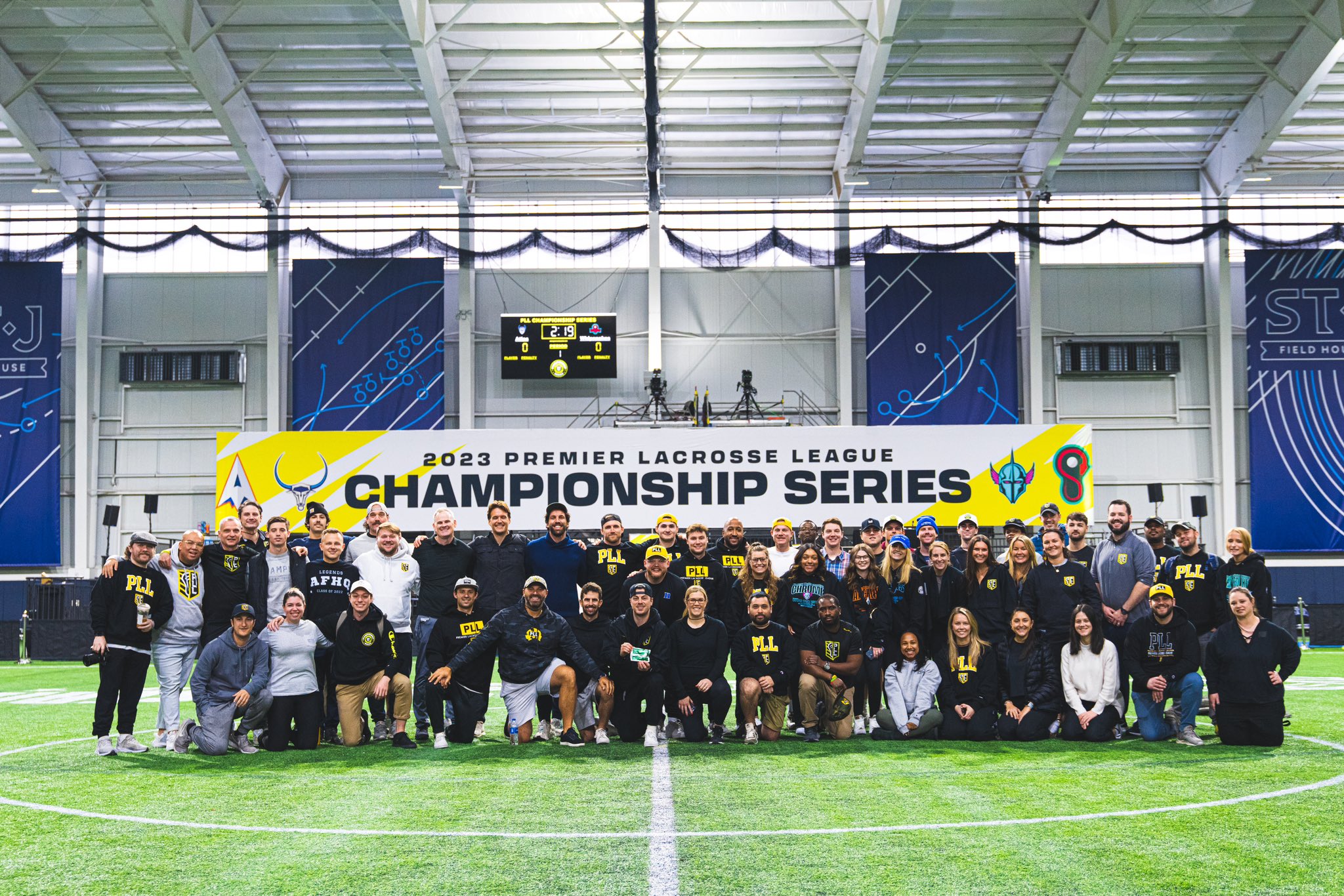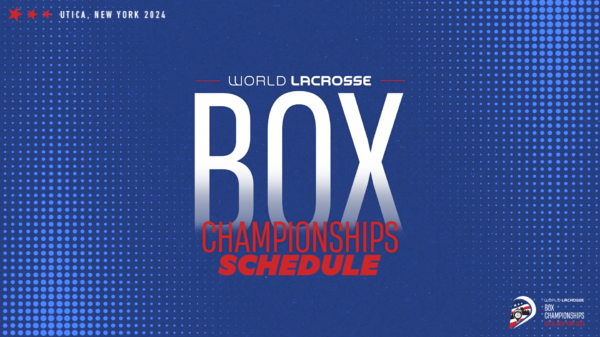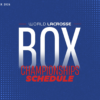by Corey McLaughlin
Chrome goaltender Sean Sconone expected he would see a lot of shots during the Premier Lacrosse League’s Championship Series. He figured the games, played in the sixes format – six-on-six, on a smaller field with a 30-second shot clock, no long poles and on-the-fly substitutions in eight-minute quarters – would be fast. Then he stepped between into the goal and stared down some of the world’s best players.
“It was way faster than I anticipated,” Sconone said.
Which is telling. Of any of the 48 PLL pros who participated in the five-day tournament in Northern Virginia, the breakneck pace displayed in the nine games that averaged 87 total shots and 38 goals may have slowed down the most for Long Island, New York, native Sconone. In the Chrome’s 24-23 win over the Atlas in the series final on Sunday afternoon, the former University of Massachusetts goalie and 2022 PLL All-Star stopped roughly 45% of the 53 shots he saw.
The game never quite slowed down for him, though.
“Actually, getting all the shots and getting the up and down was…fast,” he said afterward at The St. James sports complex sitting at a table with the championship trophy beside him.
Sixes, by design, is different than the traditional 11-on-11 field game. Almost everything is smaller (except for the size of the goals), including the field (there’s only 50 yards between the nets), rosters (12 players), and the length of defenders’ sticks.
“Short sticks everywhere,” the Archers’ Will Manny said. “Wide open. There’s a lot of passing gaps.”
And everything else is quicker. The shot clock and change of possession. There are only faceoffs at the start of quarters, and no shot backups. If the ball goes out of bounds, the team that touched it last loses possession. So, make or miss, “Every shot is a turnover,” Archers coach Chris Bates said.
It was “basketball with sticks,” Atlas coach Steven Brooks said, “and I love it. I wish I was a player. It’s a really fun game. It’s fast action. All my family and friends that were here were just talking about, ‘I never realized lacrosse could be this fast.’ It’s the fastest game on two feet but that just made it faster.”
Players play both offense and defense. Like in basketball, there were five “runners” on each team who played offense and defense unlike the specialized field game, and the PLL format also included a basketball-like 13-yard two-point arc. The only difference is the inclusion of goaltending.
It was also part hockey, with constant substitutions. Players took hockey-like shifts, typically around 45 seconds to a minute, or two or three possessions. And it was fast. The games took roughly an hour of real time, again by design, as sixes is presented as a taste of the Olympic vision for lacrosse.
“The reason why we’re doing sixes is that when we applied to get back into the Olympics, where lacrosse was once in 1904, ’08, and then the LA Games in ’32, is we had to create something that was not only gender-neutral but from a rules standpoint as well,” PLL co-founder Paul Rabil said during ESPNU’s broadcast of the final on Sunday. “Part of the criteria to try to get into the LA Games is by demonstrating that version right here.”
“And I think we’ve demonstrated it,” ESPNU analyst and 2019 National Lacrosse Hall of Fame inductee Ryan Boyle said.
After the game, Rabil said, “When we play field lacrosse, someone scores you get together and decide how did that happen? Same thing in hockey, same thing in soccer. Different in basketball, you just know you’re going to get scored on. How do you play with that dynamic? How are you understanding an 8-minute quarter? A 30-second shot clock? A team with range in this version of sixes? What we saw Chrome do was have an incredible goaltender and in every possession, they were using the clock. This version of lacrosse is such a dynamic product.”
From an Xs and Os perspective, sixes was clearly a players’ game.
“It’s fun to watch,” Chrome coach Jacques Monte said. “There’s not a whole lot of coaching going on. It’s just so fast.”
The only instruction that could really be done during games was at halftime or during timeouts, which coaches typically saved for late in the fourth quarter.
“There’s not a lot you can do,” Bates, the former coach at Princeton University, said. “You want to go grab a guy and he’s back on the field in a second. What that does is give ownership to your guys on the field, which I like.”
Archers veteran Marcus Holman said the pace reminded him of both his former basketball days and time playing box in the National Lacrosse League. On the tournament’s opening night, the Archers staged a second-half comeback against the eventual champion Chrome and won 23-22 in overtime.
In the fourth quarter, “when we went stop score, stop score, maybe stop score, and they called a timeout, it was like college basketball, when the benches get hyped,” said Holman, the former University of North Carolina star attackman. “We got some momentum from that. It made me realize how different and unique this sixes style is.”
The first thing Holman said after that game was “Sixes is fun.” He said the “non-stop element” of the format and the fact that players are tasked with playing both ends is more like box than the field game, which he likes.
“We play attack in field, so half of the game we’re not involved. When the ball is on the other end of the field, we just stand there next to the defensemn, waiting to play offense,” he said. “I consider myself a lacrosse player, before an attackman, so I love to just run around and play, whether it’s sixes or box or whatever. You’re a bit more involved and it’s a little bit more fun. I think the general consensus from our team is that guys are having fun with it and figuring it out.”
The biggest emphasis with the format, according to Brooks, a former Atlas player and currently their interim coach, was keeping players from getting tired given the speed of the game.
“It’s managing the energy and effort that they have,” Brooks said. “I want them to feel fresh for a 1-minute shift, kind of like in hockey…because you don’t want to fall apart in the fourth quarter when it means the most.”
This wasn’t the case for the Atlas on Wednesday, or over the next three days. In their opening pool game, they beat the Whipsnakes, 29-16, and entered the championship game undefeated having beaten teams by an average of nine points. But sixes strategy caught up with them in the end. In a semifinal rematch on Saturday night, the Whips ran a basketball-like full-field ride against them, with stout defender Ty Warner tracking Atlas two-point threat Romar Dennis. The Atlas still won, 30-21, to make the final, but after the championship game loss to the Chrome, Dennis, the 6-foot-5, 230-pound former Loyola University midfielder, said he thought they took a page from the Whipsnakes strategy, and admitted he was gassed from a grueling five games in five days.
“Shooting on the run, with my weight, is really tiring. I’m worn down,” said Dennis, who scored a tournament-best 34 points and 15 two-pointers. “They tired me out.”
Then he gave credit to Scanone, the Chrome goalie he faced on Sunday.
Sixes isn’t a format that is fair to those between the pipes, Dennis said, but “Sconone is an unbelievable goalie… I’ve never seen him rattled.”
So maybe Sixes did slow down for him, after all. Just enough.






